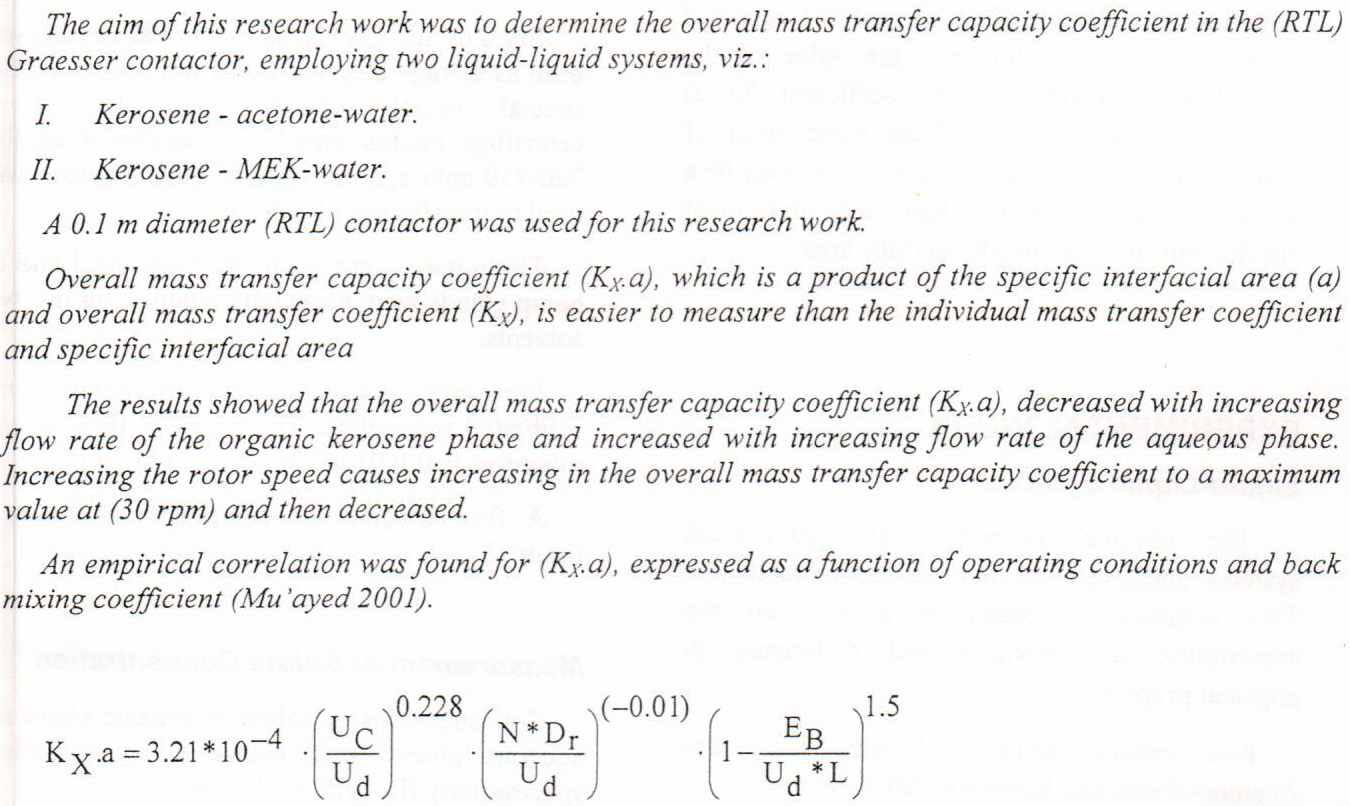
The aim of this study was to assess the nutritional status for samples at the age of 17-15 years. These samples were taken from secondary schools and universities in Baghdad area, 123 of them were male and 261 were female. Data on weight, height and body mass index (BMI) were determined in each individual. Smaller sample of 215 individuals (male and female) from the original sample was taken in order to record their nutritional behavior and daily food intake during the 24 hours prior to the visit through personal meeting using special questionnaire. The results showed that the weight and the height were within the range of the people of neighboring Arab countries, who are in the same age. Beside 44.4- 55.95% of these samples were within t
... Show More (1)
(1)
A single step extraction-cleanup procedure using porous membrane-protected micro-solid phase extraction (μ-SPE) in conjunction with liquid chromatography–tandem mass spectrometry for the extraction and determination of aflatoxins (AFs) B1, B2, G1 and G2 from food was successfully developed. After the extraction, AFs were desorbed from the μ-SPE device by ultrasonication using acetonitrile. The optimum extraction conditions were: sorbent material, C8; sorbent mass, 20 mg; extraction time, 90 min; stirring speed, 1000 rpm; sample volume, 10 mL; desorption solvent, acetonitrile; solvent volume, 350 μL and ultrasonication period, 25 min without salt addition. Under the optimum conditions, enrichment factor of 11, 9, 9 and 10 for AFG2, AFG1
... Show More (63)
(63)
 (62)
(62)
 (1)
(1)
The coefficient of charge transfer at heterogeneous devices of Au metal with a well-known dyeis investigations using quantum model.Four different solvent are used to estimation the effective transition energy. The potential barrier at interface of Au and dye has been determined using effective transition energy and difference between the Fermi energy of Au metal and ionization energy of dye. A possible transfer mechanism cross the potential barrier dyeand coupling strength interaction between the electronic levels in systems of Au and is discussed.Differentdata of effective transition energy and potential barrier calculations suggest that solvent is more suitable to binds Au with dye.
 (1)
(1)
 (1)
(1)
 (42)
(42)
 (42)
(42)
The purpose of this paper to discriminate between the poetic poems of each poet depending on the characteristics and attribute of the Arabic letters. Four categories used for the Arabic letters, letters frequency have been included in a multidimensional contingency table and each dimension has two or more levels, then contingency coefficient calculated.
The paper sample consists of six poets from different historical ages, and each poet has five poems. The method was programmed using the MATLAB program, the efficiency of the proposed method is 53% for the whole sample, and between 90% and 95% for each poet's poems.
This research aims to investigate the thermal performance of different thermal composite insulators, wrapped around a closed-loop copper pipe (CLP). To achieve this aim a system was designed and manufactured. It is consisted of closed water tank insulated by Rock Wool, and supplied with two electric heaters, two thermostat, a flow meter, a water pump, digital temperature scales, and four series of (CLP).
Six insulators were prepared namely; composites of Impregnated Fiberglass with Elastoclad and foaming Rubber (FER), Impregnated Fiberglass with Elastoclad resin and Polymeric Membrane (FEM), Impregnated Fiberglass with Polyurethane thermoset resin and Foaming Rubber (FUR), Impregnated Fiberglass with Polyurethane thermoset resin and P
Preserving and saving energy have never been more important, thus the requirement for more effective and efficient heat exchangers has never been more important. However, in order to pave the way for the proposal of a truly efficient technique, there is a need to understand the shortcomings and strengths of various aspects of heat transfer techniques. This review aims to systematically identify these characteristics two of the most popular passive heat transfer techniques: nanofluids and helically coiled tubes. The review indicated that nanoparticles improve thermal conductivity of base fluid and that the nanoparticle size, as well as the concentrations of the nanoparticles plays a major role in the effectiveness of the nanofluids.
... Show More (3)
(3)
 (1)
(1)
Different parameters of double pipe helical coil were investigation experimentally. Four coils were used; three with a curvature ratio (0.037, 0.031, and 0.028) and 11mm diameter of the inner tube while the fourth with 0.033 curvature ratio and 13 mm diameter of the inner tube. The hot water flow in the inner tube whereas the cold water flows in the annulus. The inlet temperatures of hot and cold water are 50 0C and 18 0C respectively. The inner mass flow rate ranges from 0.0167 to 0.0583 kg/s. The results show the Nusselt number increase with increase curvature ratio. The Nusselt number of the coil with 0.037 curvature ratio increases by approximately 12.3 % as compare with 0.028 curvature ratio. The results also r
... Show MoreIn this numerical study a detailed evaluation of the heat transfer characteristics and flow structure in a laminar and turbulent flow through a rectangular channel containing built-in of different type vortex generator has been a accomplished in a range of Reynolds number between 500 and 100,000.A modified version of ESCEAT code has been used to solve Navier-Stokes and energy equations. The purpose of this paper is to present numerical comparisons in terms of temperature, Nusselt number and flow patterns on several configurations of longitudinal vortex generator including new five cases. The structures of heat and flow were studied, using iso-contours of velocity components, vortices, temperature and Nusselt n
... Show More